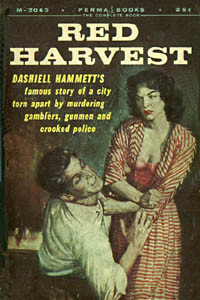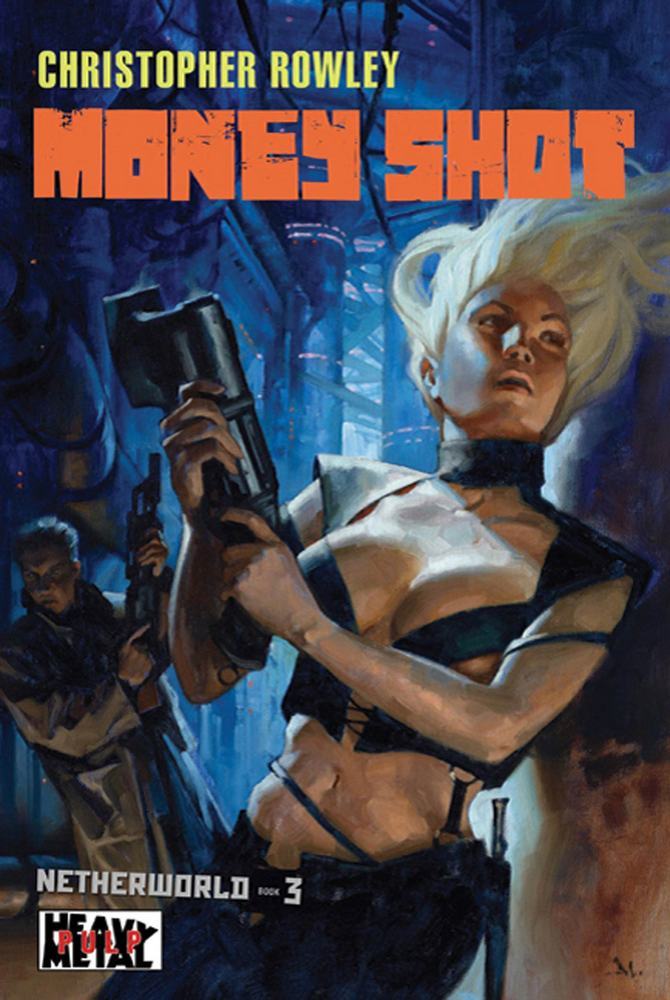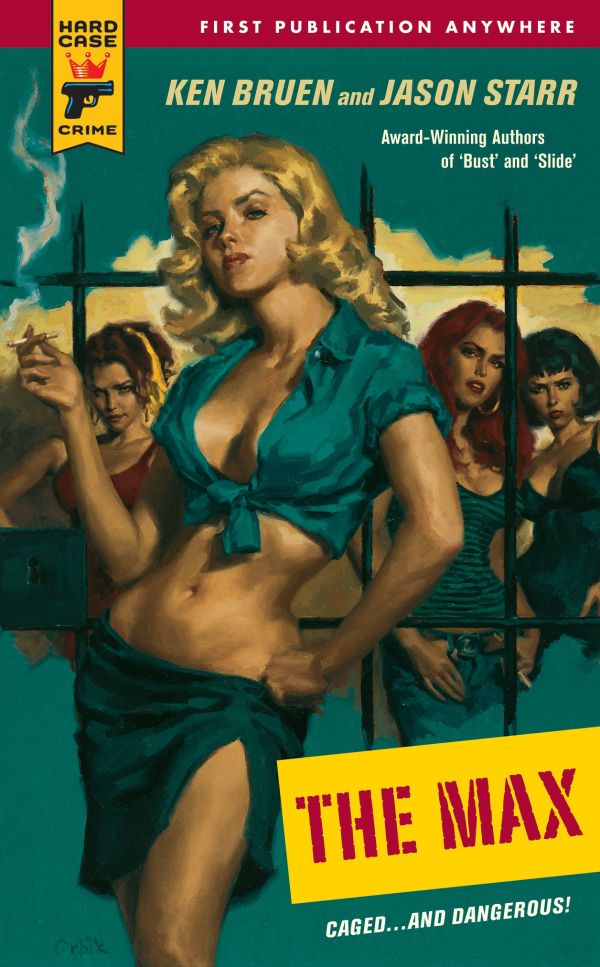Making Crime Pay
I write and review crime fiction and thrillers and teach fiction writing and publishing at SSU.
FREE Guide on How To Write A Thriller: The Thriller Formula
In this guide, designed for those new to thriller writing, you will learn how to breakdown a seemingly overwhelming task into 8 distinctive sections that act as a blueprint so you’ll always know what to write next and where your story must go in order to meet readers’ expectations of the genre.
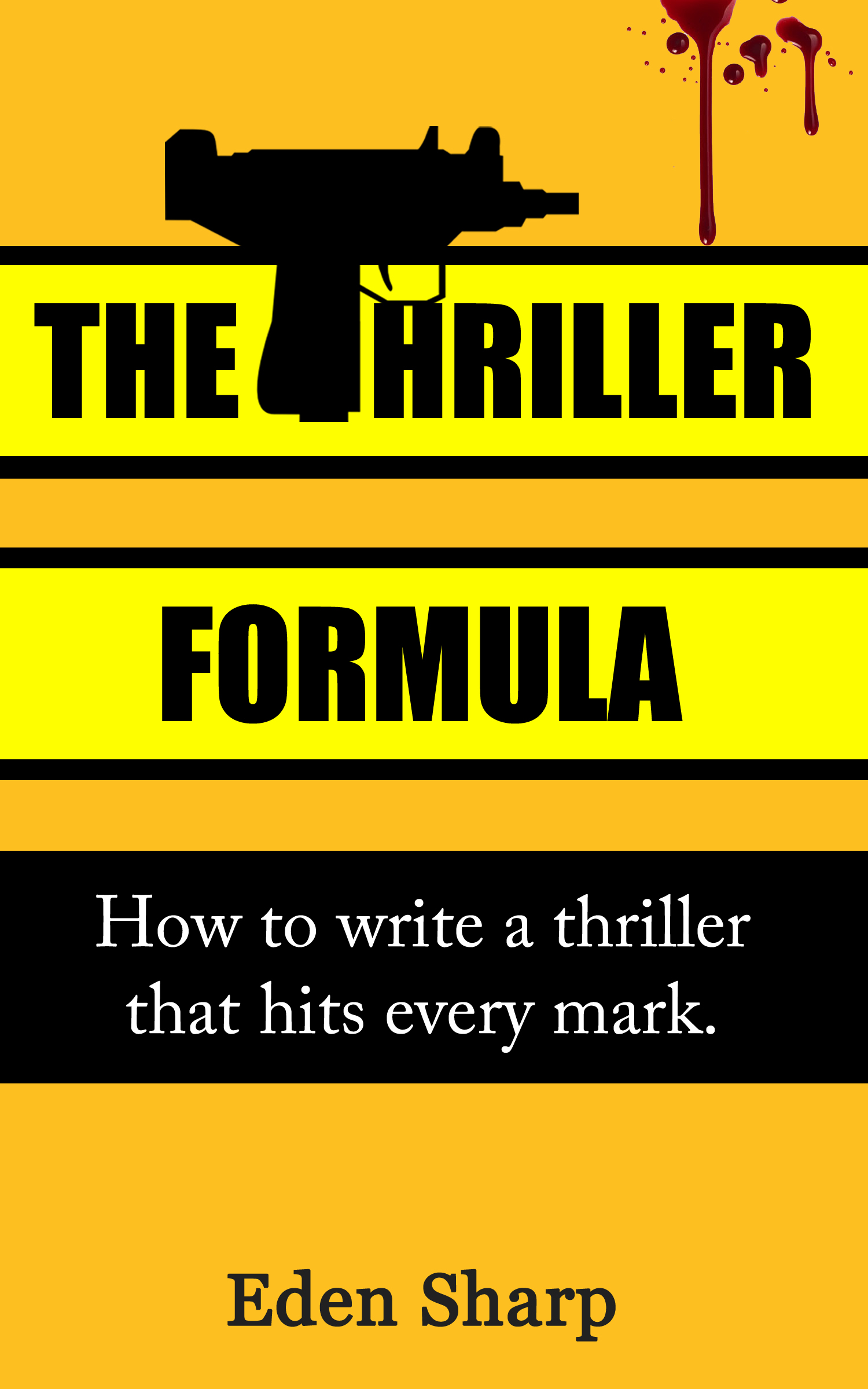
In this way, you will be following the structure of many of Hollywood’s blockbusting movies and the way this is translated into the thrillers written by your favourite authors you are reading and enjoying. You’ll learn exactly the format these successful thrillers follow that heightens readers’ emotions, takes them on a rollercoasting, page-turning thrill-ride, builds to an exciting climax, and leaves the reader absorbed to the end fully satisfied by the experience. This is the formula that has been so finely honed by Hollywood, and the greatest thrillers have it. Quite simply, it works.
Grab a free copy here: bit.ly/1HZWdaK
Thanks to everyone for your support.
The Breaks has been downloaded by thousands of people over the last few days. Thank you if you are one of my new readers. Get in touch. I'd love to hear from you. If you're interested in grabbing a free copy go here.

The book also made it on to 3 Amazon bestseller lists.

I've received some great feedback. A couple of readers had finished it and commented within hours of downloading:
Finished! Really enjoyed it - the type of book I enjoy. I like the fact the main character is a women. Slightly worried that we live in such a Big Brother world! Makes you wonder... Looking forward to the next one already. No pressure!! Oh, and I want it to continue, if you know what I mean. Don't want to give anything away! - Sharon Shotts via Twitter @sshotts
Almost finished reading 'The Breaks' by @EdenSharp, I recommend this thriller! - Alice Stansfield via Twitter @AliceoOlivia
The Breaks is now on FREE PROMO.
My crime thriller, The Breaks, has now gone free on Amazon for a limited time period.
Got a smartphone? I GOT YOU. Hardboiled hacking, vigilante investigator, San Francisco badlands.


FREE Kindle copy of The Breaks. Limited time offer.
I write crime thrillers with high stakes, fully-rounded characters and plot twists that never let up until the adrenaline-packed climax.
Download The Breaks for FREE from Amazon in a limited offer:
Starts: Monday 6 April 12.00am PDT (UK: 8.00am BST)
Ends: Wednesday 8 April 12.00am PDT (UK: 8.00am BST)
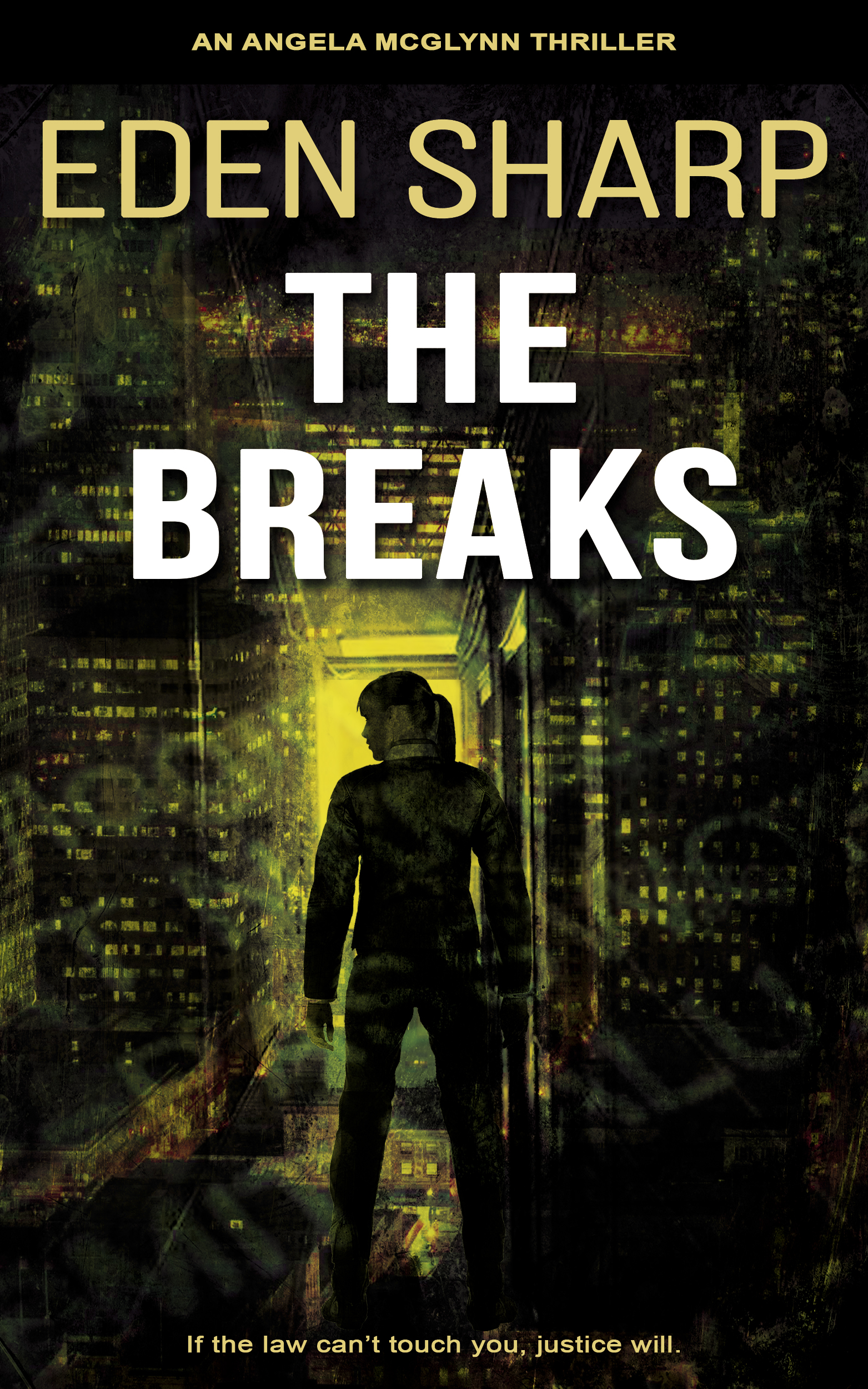
Here's the blurb:
Angela McGlynn is concealing dark secrets: engaging in vigilante activism in an attempt to dismiss self-destructive thoughts. When she employs recently discharged veteran John Knox to aid her in the search for a missing girl, she soon comes to realise that war has left him broken. As they both become embroiled ever deeper into a vortex of danger and half-truths rapidly spinning out of control, his need to rescue the girl and her insistence on exacting justice compel each of them to pursue a course of action with no regard for the potential psychological fallout.
- If you like strong female protagonists you’ll love Angela McGlynn. People often ask me about my influences. Well, I love the type of detective who fulfils the loner convention. This is something that many literary critics have said isn’t possible with a female lead but I beg to differ. In fact that’s just what I set out to do. I’ll let you be the judge of whether or not I pulled it off.
- Favourite authors of mine writing cool detectives include Andrew Vachss and Michael Connolly (Burke and Bosch), and in terms of the loner trope, what’s not to love about the characters of Jack Reacher and John Rain created by Lee Child and Barry Eisler.
- Some people have told me that those who enjoy books like The Girl With The Dragon Tattoo will be interested in the character of Angela McGlynn, presumably because of the hacking, but I have never read it. Not that I didn’t want to, but as soon as I heard a couple of people mention similarities (which I believe will be minor) I decided I didn’t want to be influenced by it in any way.
- My story is really the story of two different people; besides my protagonist book one introduces John Knox. What interested me greatly at the time of writing was the war in Afghanistan which informed the creation of his character and it was this, along with my practice of martial arts and love of anime that have been my greatest influences for book one.
GET9 is a whole other story.
Thrillers vs. Mystery Novels
I write crime thrillers. So how do I define the genre and what makes a thriller different from a mystery?
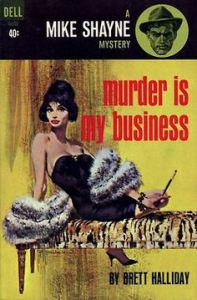
The thriller uses suspense, tension, and excitement as its main elements. Thrillers provide the reader with a high level of anticipation, ultra-heightened expectation, uncertainty, anxiety and surprise. This genre of book tends to be gritty and fast-paced.
Excitement drives the narrative, sometimes subtly with peaks and lulls, sometimes at a constant, breakneck pace. It keeps the reader on the ‘edge of their seats’ as the plot builds towards a climax. Thrillers employ literary devices such as red herrings, plot twists and cliffhangers and usually have a villain-driven plot, whereby he or she presents obstacles that the protagonist must overcome.
Crime thrillers are thrillers in which the central characters are involved in crime, either in its investigation, as the perpetrator or, less commonly, a victim (generally, this is just a thriller).
- In a mystery, the crime has already been committed, but the hero and the reader must figure out by whom.
- In a thriller, the main event crime hasn’t been committed yet, but the reader (and possibly the hero) knows who the bad guy is; the question is whether he can be stopped.
In a mystery, the hero has a mission to find a killer. In a thriller, the hero has a mission to foil evil.
Bad (ill-informed) things are often said about genre fiction and thrillers in particular: that they are plot-driven, they feature one-dimensional characters and don’t leave the reader with any lasting impressions or things to ponder.
I don’t personally enjoy reading character-based novels that don’t really go anywhere (with no story) but it isn’t true that all literary fiction falls into this catergory and neither is it true that all genre fiction is solely plot-based. There are many great characters in crime fiction and all good writing in the genre includes fully-rounded main characters. (Sometimes minor characters are loosely sketched because they are really ‘spheres of action’ as opposed to true roles – hey it’s a craft thing)!
I vote for character plus plot anytime and crime fiction in particular is known for being a vehicle for social commentary with its all-walks-of-life, access-all-areas delving.
Commercial fiction sells well because it’s popular and most people consider there is nothing wrong with that aside from a few who are inclined towards preserving a narrowly-defined cultural standard or to dictate what should be included in the canon. Let’s not forget Charles Dickens was the pulp of his day.
Criticism is often especially levelled at the thriller because it is dubbed ‘formulaic’. Well get this: there is a formula and it’s based on at least two thousand years worth of story-telling. If you’re interested in learning to write thrillers or discussing thriller structure I’d love to hear from you. Leave a comment. Let’s talk!
The Breaks is available on Amazon. If you would like a free copy please leave your details here.
Hardboiled vs. Noir
What's the difference between hardboiled and noir?

Hardboiled – tough American crime writing featuring graphic sex and violence, vivid urban backgrounds, fast-paced action, sassy dialogue and a tough, cynical, world weary investigator.
Generally, it does include a murder mystery. Cases that at first seem straightforward, often turn out to be quite complicated, forcing the investigator to embark on an odyssey through the urban landscape.
The typical American investigator in these novels is someone who:
- works alone
- has a tough loner personality
- hangs out at shady all-night bars
- is a heavy drinker but able to fight back when attacked
- carries a gun
- shoots criminals or takes a beating if it helps solve a case
- is involved with organized crime and other lowlifes on the “mean streets” of, preferably Los Angeles, San Francisco, New York, or Chicago
- has an ambivalent attitude towards the police
- has an ambition to rid the world of its mean elements
Authors: Dashiell Hammett, Raymond Chandler, Mickey Spillane
Chandler on the author of hardboiled fiction as opposed to the classic detective story: “gave murder back to the kind of people who commit it for reasons, not just to provide a corpse; and with the means at hand, not with hand-wrought duelling pistols, curare, and tropical fish.”

Noir – crime fiction or films characterized by fatalism, moral ambiguity, emotional darkness and often tragedy.
Noir is closely related to the hardboiled genre with a distinction that the protagonist is not a detective, but instead either a victim, a suspect, or a perpetrator. Other common characteristics include the self-destructive qualities of the protagonist.
Authors: James M. Cain, Cornell Woolrich, David Goodis.
Woolrich on Noir: “I had that trapped feeling, like some sort of a poor insect that you’ve put inside a downturned glass, and it tries to climb up the sides, and it can’t, and it can’t, and it can’t.”
Polygraph by Cy Wyss

From the opening line that drew me in, I was gripped throughout this supremely engaging story.
Alcohol and bravado plunge Lukas Richter and his partner into a dangerous situation and they're soon alienated from all that's familiar. Richter, with his cool comebacks and preternatural senses, uses his perceptive insight to good effect to track down the July Strangler, a serial rapist whose crimes have escalated to murder. The problem is this is no ordinary opponent and for all Richter's astuteness, he now stands to lose everything.
This is a skillfully crafted short with naturalistic, believable dialogue and a terrific fight scene. The pace never lets up from the get go and I'm looking forward to making the acquaintance of Lukas Richter again. No reservations about this one, get it, then eagerly await Richter's next adventure.
The Bloodless Mask by Cy Wyss
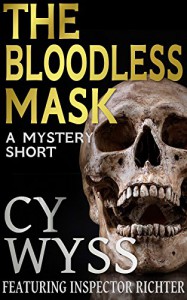
I had to read this after discovering Inspector Richter in Polygraph. I'm really glad I did. Time has passed and Lukas Richter has moved up the ranks and we get to know him far more intimately. Perceptive, resolute, fair-minded and with his enigmatic ojo loco, he's someone you'd want fighting your corner. This book skillfully spans time and the mythology surrounding the skulls was fascinating.
Like the previous Richter instalment in which he was introduced, The Bloodless Mask held me spellbound throughout and the high-octane chase scene left me breathless. Another thrilling and gripping tale in the Richter series. I was only disappointed that it was over. Now I need another.
Roseanna by Maj Sjöwall and Per Wahlöö

Featuring police detective, Martin Beck, on the hunt for the killer of a young woman named Roseanna who has been found dead in a canal after being raped and murdered. Time elapses with no leads and the case goes cold until, via Interpol, she is identified as an American tourist who had been a passenger on a boat trip. A sting operation ensues using a female police officer as bait to trap the killer.
This book deserves its kudos as an original at the forefront of Scandi-noir and I appreciate the authors’ inclusion of social commentary. It is notable however how slow and plodding this novel feels, partly due, I expect, to the tendency of contemporary fiction to be so dazzlingly fast-paced and partly due to the vagaries of the low-tech era from which it sprang. Despite this lack of pace feeling wearisome at times I was completely engaged and never thought of giving up. The climax was so rapid-fire by comparison it just zipped by and almost at once, it was the end of the book. Would I read another? Because of heritage and prestige yes. But it didn’t foster in me the excitement I feel reading more contemporary works of its kind.
Twisted by Lola Smirnova

A heart-breaking and moving story of the seedy underbelly of society that sex workers are forced to inhabit. The book is well-written with a vivid, visceral style and some beautifully observed insights into the human condition.
Gripping from the outset, this tale of three Ukrainian sisters also provides family drama and some revealing glimpses into a country struggling to recover from communism. Contemporary, relevant, riveting and highly recommended.
The Big Clock by Kenneth Fearing
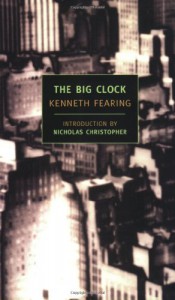
The big clock of the title is our seemingly inevitable fate; time marching on relentlessly towards our end, and this also sums up the predicament the protagonist feels in this story of a man investigating himself for a murder he didn’t commit.
The lovely Pauline Delos has been murdered by her boyfriend, a magazine publisher, and this becomes obvious to one of his employees, standing in the shadows, having been almost caught in flagrante delicto mid-affair. The big boss, aware of another man’s presence at the scene, sets about trying to identify this stranger in the hopes of pinning the crime on him and saving his own skin. The publisher gives the task to said employee, a man with editorial control over a title breaking stories on real life crime.
The first half of the novel is a delight in terms of turns of phrase. At a business function, the first person narration of the protagonist describes the guests: ‘Some of them tomorrow’s famous fugitives from justice. A sizeable sprinkling of lunatics, so plausible they had never been suspected and never would be. Memorable bankrupts of the future, the obscure suicides of ten or twenty years from now. Potentially fabulous murderers. The mothers or fathers of truly great people I would never know.’ Also, the discussion on abortion in the 1940s is pretty powerful along with the mention of gay characters. The social commentary aspect is one of the things I most enjoy about the crime genre.
However it is only shortly after reaching the mid-point that the set-up is finally complete and we kick off with the inciting incident. So although the premise of the novel is terrific, we are, these days, much more used to thrillers starting in media res, and it seems a shame that the engines are warming for as long as they are. This novel is touted as being a tour de force of suspense but I believe today’s thrillers have to work a lot harder and their authors have to work for longer to ensure that tension is built and maintained.
The suspense leading to the final answering of the dramatic question, will he succeed or be undone, is gripping, and the twists and turns which occur when he is recognised but must skilfully sidestep his undoing or be damned are masterful. It’s just that I wanted it to go on for longer.
Red Harvest by Dashiell Hammett

Featuring the nameless detective the “Continental Op” the lead in Red Harvest lay the foundation for the hardboiled detective archetype. The Op is hired by a newspaper magnet’s son and forced into action immediately upon arrival in Poisonville, a mining town in Montana, when he learns his client has been killed. He begins working for the victim’s father, promising to clean up a dirty town full of bent cops, teamsters and rival hoods. The Red Harvest of the title refers to the blood-letting which ensues.
It’s not great on plotting but big on atmosphere and brilliant dialogue. On a deeper level, scholars have discussed it in terms of being an allegory about organised labour, and even a Marxist critique of capitalism. Later on the newspaper man was seen to be a coded version of George Hearst, the Montana mine-owner whose son William controlled California newspapers and politics in Hammett’s day.
